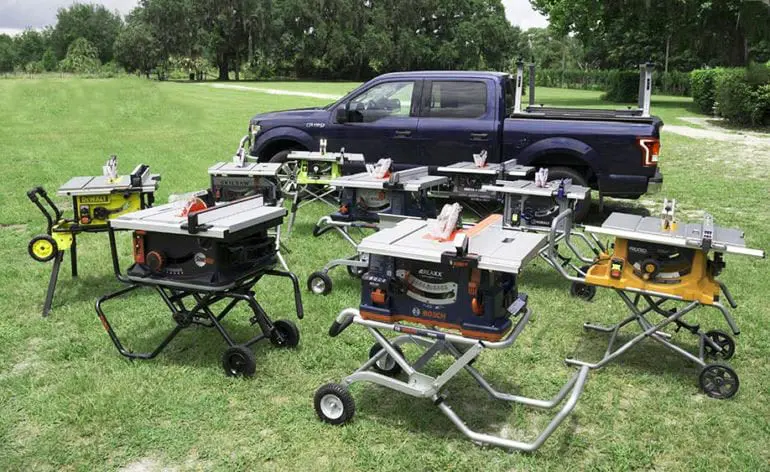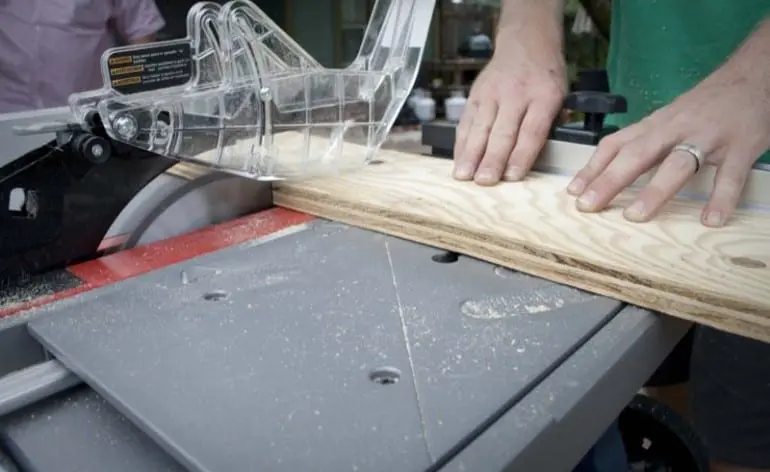Wisdom From the Pro to the Apprentice
Ask a group of woodworkers what the optimal table saw blade height is and you may soon be longing for the relative civility of a political or religious conversation. Opinions abound. Some say the blade should be no more than an 1/8 inch above the cutting surface while others say the blade should rise to the bottom of the gullet (the space between the teeth).
Some say one height prevents more kickbacks and minimizes tearout. Then there’s the common refrain that it’s all about the rake (hook) angle. You might find yourself without an answer—even after you’ve heard from several Pros. It’s not even the first time we’ve written about it. So what is the correct table saw blade height? Here are some things for you to consider about setting the optimal table saw blade height – the same things we looked at during our jobsite table saw shootout.

The Angle Incident
The angle of incidence is how the blade approaches the wood. A lower blade height has a lower angle. The force is directed predominantly toward the operator, which can be dangerous in a Type 1 kickback, where the material is shoved back in the direction it came from by the front teeth of the blade. In the case of the more dangerous Type 2 kickback—where a piece of already-sawn material is broken off by the back teeth rising through the plate—the lower angle of incidence propels the shrapnel at a lower point, threatening some sensitive areas.
A higher blade has a higher angle of incidence. Type 1 kickbacks are less likely because the front teeth plunge more downward into the material with a force toward the table’s surface. However, the higher angle means that Type 2 kickbacks are more dangerous as shrapnel can be propelled at a higher part of the user (throat, face, head, eyes…you get the picture) by the back teeth rising from the plate.
It’s Getting Hot In Here
A low blade height means that more teeth will be in contact with the wood, and that results in more heat generated during the cut. This also means a slower feed through the saw due to less-efficient material removal. For hardwood, this has the potential to burn the edge of your work piece. The opposite is true for a higher blade height—there’s a cooler, faster cut because fewer teeth are in contact with the material. It’s easy to see why there are so many opinions about setting the optimal table saw blade height.

Setting The Optimal Table Saw Blade Height on a Tear
On a table saw, tearout or chipping occurs on the face-down side of the material as the kerf exits through the unsupported fibers on the surface. This can be mitigated in several ways, but all other things being equal, a lower blade results in less tearout while a higher blade results in more. We’ll discuss specific ways to avoid tearout in another article. For now, be sure to read our article about choosing the best table saw.
Safe Danger
Some will say that it’s simply safer to have no more blade exposed than necessary. Others argue that a spinning table saw blade is dangerous at just about any height that makes it useful. So what’s the verdict?
The discussion will undoubtedly continue. But perhaps the importance of blade height is superseded by the safety tools used and precautions taken by the table saw user. As one woodworker put it, “The right cut is the safe cut”. To minimize dangerous Type 2 kickbacks, the splitter on older saws is good, but a more modern riving knife is better. It prevents the sawn pieces from crossing the blade’s rear teeth and creating a projectile.
Be sure to consider keeping the blade guard in place as well. A powerful saw and a sharp blade prevent Type 1 kickbacks, as do featherboards and push-sticks that push as well as press down. Many blades claim to be for all purposes, but consider a blade designed specifically for the type of material and cut. This means you should be specific about the number of teeth, rake (hook) angle, and so on. Of course, always wear eye protection.
So what is the optimal table saw blade height? As you can tell, the answer is a solid “it depends”. Hopefully we’ve give you enough information to defend why you’re using the method you prefer. If you’re a Pro and have table saw blade height tips to pass on to our apprentice readers, leave them in the comments below—or contact us with your own Pro tips.



